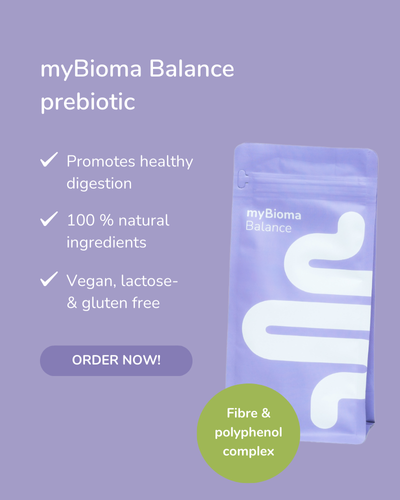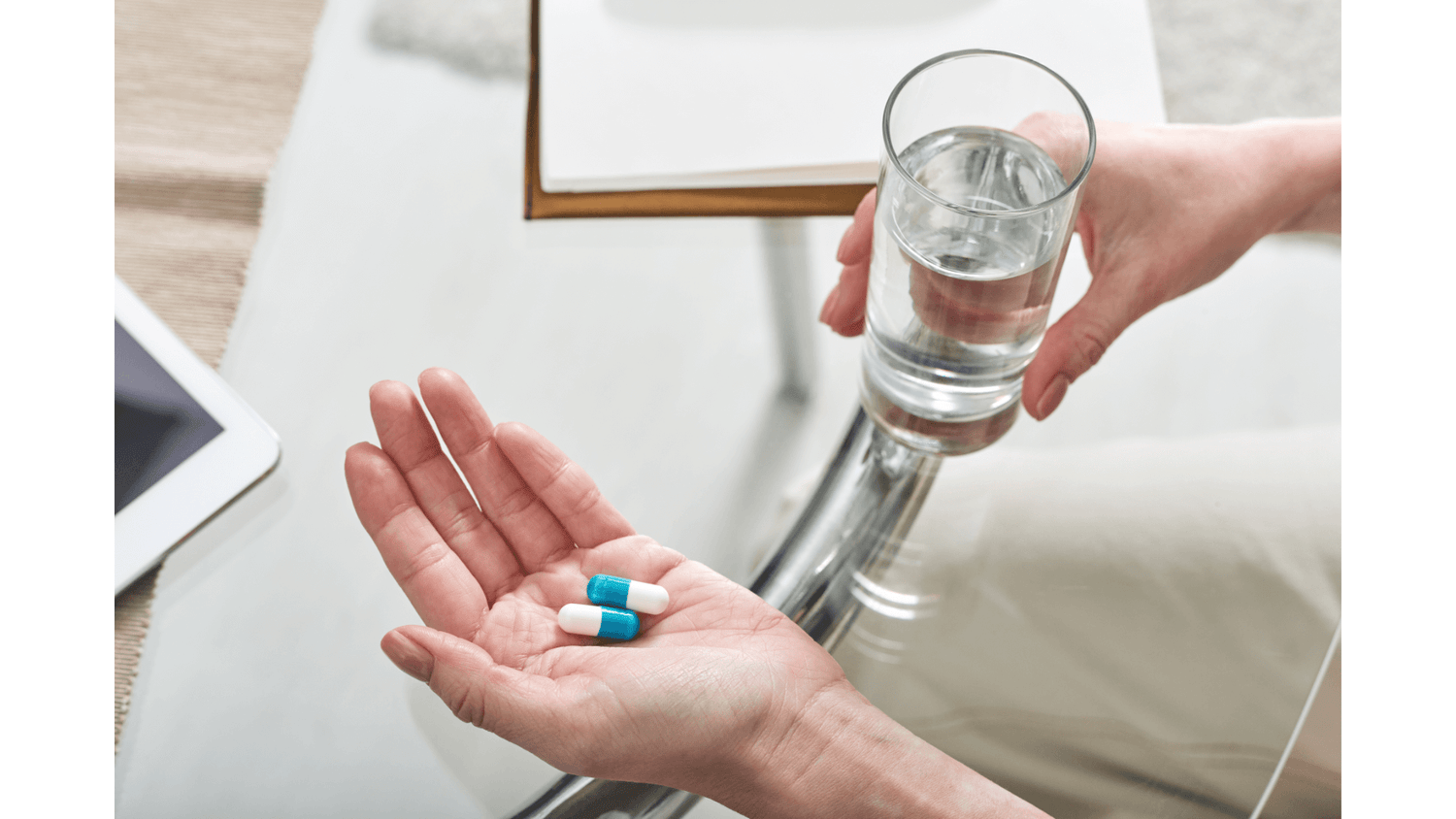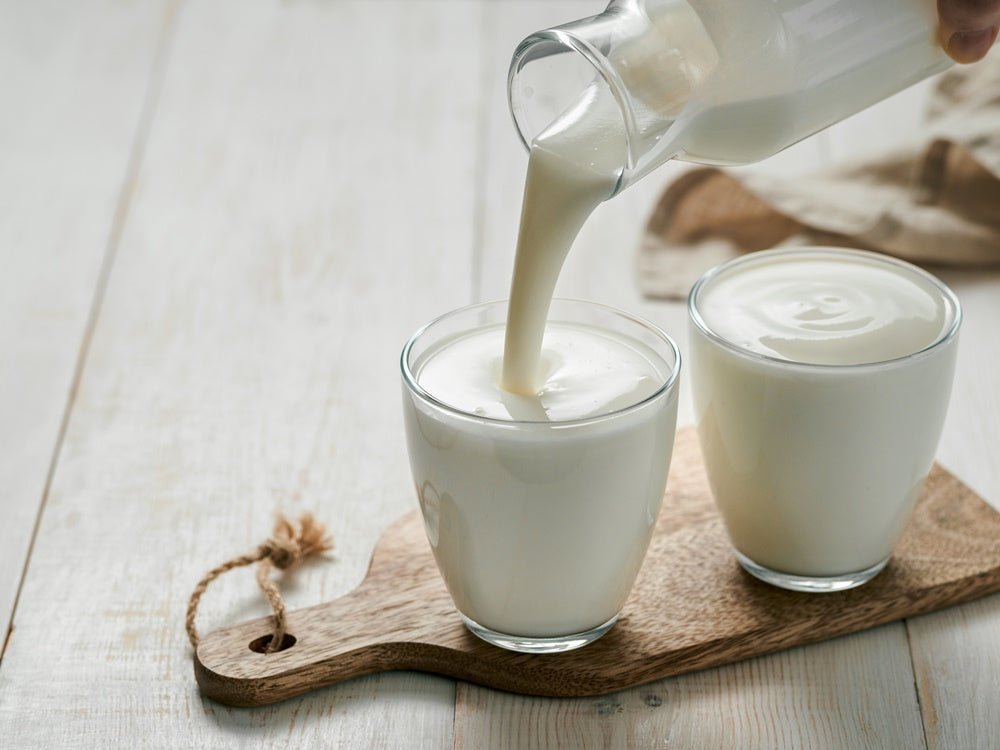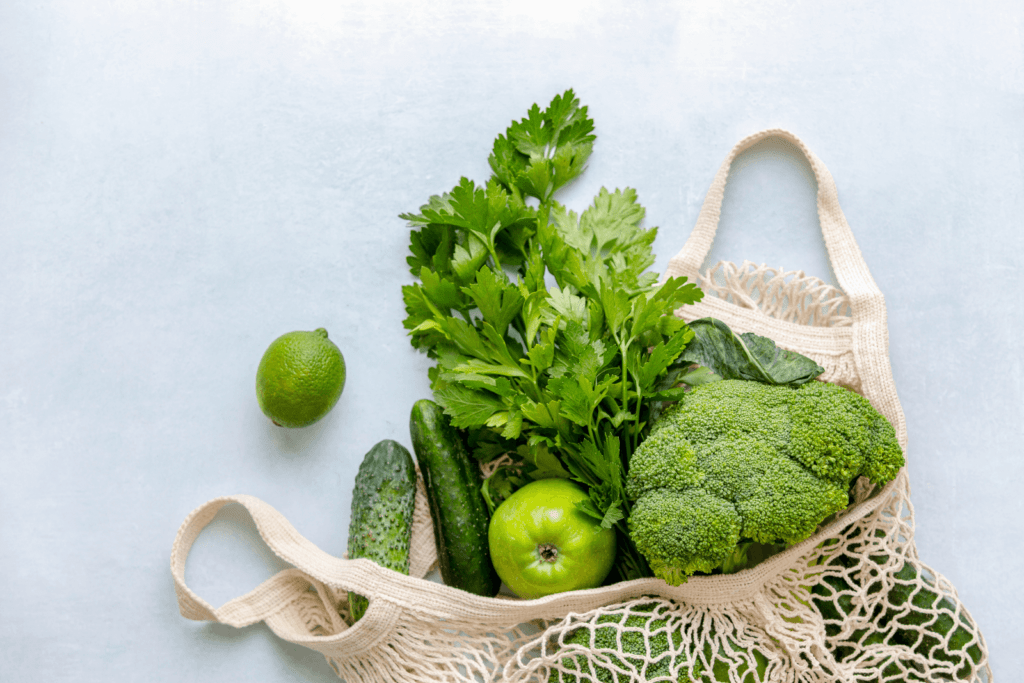Without our gut bacteria, our digestive system would be less efficient, and we would not be able to digest most food components. The gut microbiome helps us convert the food we eat into energy and nutrients. In this article, you’ll learn how these tiny helpers support your digestion.
The journey of intestinal bacteria in the human gastrointestinal tract
Our intestinal bacteria colonize different parts of the human gastrointestinal tract at different densities, with most being found in the colon (1). Starting with the stomach, the density of resident bacteria is <103 CFU/ml (CFU = colony forming units). The small intestine consists of three parts, the duodenum, the jejunum, and the ileum, whose main function is the digestion and absorption of food and nutrients. Because the environment in the different parts of the small intestine is different, the bacterial density and diversity also differ. At the beginning of the small intestine, bacterial density is limited by oxygen, bile acid, pancreatic secretions, and antimicrobials. In the jejunum, bacteria that tolerate oxygen, so-called aerobes, are predominant. In the ileum, the density of bacteria is already 109 CFU/ml. The large intestine, which is divided into caecum and colon, is characterized by slower food passage and an environment without oxygen. Therefore, water absorption and fermentation of undigested food take place mainly in the colon, where the bacterial density is 1012 CFU/ml (2), (3). In the colon, the bacterial groups Bacteroidetes and Firmicutes are mainly represented.

Intestinal bacteria in the gastrointestinal tract (2).
Dietary fiber, the favorite food of our intestinal bacteria
With their specific enzymes, our intestinal bacteria support digestion and thus enable the metabolism of complex food components. They break down carbohydrates, proteins, and fats into more easily digestible components that our body can absorb. Compared to complex carbohydrates, proteins and fats are broken down to a lesser extent. Dietary fiber and non-digestible carbohydrates such as starch, non-starch polysaccharides and oligosaccharides are broken down and fermented in the large intestine by our gut bacteria. Since these polysaccharides differ in their structures, different enzymes are required. The more complex the polysaccharide, the more enzymes are needed to break it down. The bacteria metabolize these non-digestible carbohydrates to gases, short-chain fatty acids (SCFA), and alcohols (2).
The short-chain fatty acids are important metabolites that have various functions and support health. The three most important short-chain fatty acids are acetate (60%), butyrate (15%) and propionate (25%). Acetate serves as an energy source in the adjacent tissues and is used for the synthesis of triglycerides and cholesterol in the liver. Butyrate is the main energy supplier for intestinal epithelial cells (2),(4). In addition, butyrate supports energy balance by stimulating endocrine cells to produce the peptide hormones leptin and GLP-1. These peptide hormones are important regulators of hunger and satiety (5). In addition, short-chain fatty acids regulate the pH in the intestinal lumen, support the barrier function of the intestinal mucosa, and immune function (6). Studies show an association between decreased abundance of SCFA-producing bacteria or decreased genomic potential for SCFA production with diseases such as type 1 diabetes, type 2 diabetes, liver cirrhosis, inflammatory bowel disease, and atherosclerosis (7).

The intestinal bacteria produce healthy short-chain fatty acids from fibre-rich foods.
Gut health and the protein puzzle
Several different factors influence how much dietary protein we break down and how much reaches our gut microbiome. The most important factors are the amount of protein gained per meal and digestibility, which depends on the protein source. Undigested proteins are also broken down by gut bacteria to SCFA and other molecules, such as hydrogen, ammonia, choline, and sulfides. Certain bacteria are also equipped with specific enzymes for this purpose. Clostridium spp., Bacteroides spp., and Lactobacillus spp. have a wide repertoire of different enzymes for protein degradation (2). Furthermore, the type of protein source has an impact on the composition of the gut microbiome. Animal and plant protein sources favor the growth of different bacteria. Plant proteins are more difficult to digest compared to animal proteins. Therefore, a greater proportion of plant protein might be expected to reach the colon, leading to increased fermentation of the protein by the microbiota. This fermentation has been associated with some diseases such as inflammatory bowel disease, colon cancer, and metabolic diseases. However, several large studies show that increased intake of plant protein has beneficial health effects (8). Other studies show evidence that the interaction of the microbiota and animal protein sources may have negative health effects. For example, through microbial production of trimethylamine from choline in red meat (8). Therefore, the relationship between dietary protein source, gut bacteria, and health outcomes is not yet fully understood.
Healthy fats, happy microbiome
Healthy fats are also part of a balanced diet. Only a very small portion of dietary fats about 5% enter the large intestine (9). The amount and type of dietary fats influences the microbiome composition. A high fat diet leads to dysbiosis of the gut microbiome and promotes obesity, as well as inflammation (2). Dietary cholesterol is degraded to bile acid in the liver. Intestinal bacteria in turn produce secondary bile acids from the primary bile acids, which again find their way into the liver. The content of secondary bile acids is particularly high in people who eat a high-fat diet. This is because the group of bacteria responsible for the metabolic pathway increases (10). Omega-3 fatty acids are healthy fats that have a positive effect on the gut-brain axis by modulating the production of important neurotransmitters such as serotonin and dopamine (11).
Our gut microbiome is involved in many complex metabolic pathways and enables many processes that occur daily in the body, such as our digestion. Without our gut bacteria, we would not be able to utilize many food components. Therefore, a balanced diet positively influences the diversity and functions of your gut microbiome.
References
- S. Khanna and P. K. Tosh, “A clinician’s primer on the role of the microbiome in human health and disease,” Mayo Clin Proc, vol. 89, no. 1, pp. 107–114, 2014.
- A. Adak and M. R. Khan, “An insight into gut microbiota and its functionalities,” Cellular and Molecular Life Sciences, vol. 76, no. 3, pp. 473–493, Feb. 2019.
- P. B. Eckburg et al., “Diversity of the Human Intestinal Microbial Flora,” Science (1979), vol. 308, no. 5728, pp. 1635–1638, Jun. 2005, [Online]. Available: https://www.science.org/doi/10.1126/science.1110591
- A. Koh, F. De Vadder, P. Kovatcheva-Datchary, and F. Bäckhed, “From Dietary Fiber to Host Physiology: Short-Chain Fatty Acids as Key Bacterial Metabolites,” Cell, vol. 165, no. 6, pp. 1332–1345, Jun. 2016, doi:10.1016/j.cell.2016.05.041.
- E. E. Blaak et al., “ Short chain fatty acids in human gut and metabolic health,” Beneficial Microbes , vol. 11, no. 5, pp. 411–455, Aug. 2020.
- M. Li, B. C. A. M. van Esch, G. T. M. Wagenaar, J. Garssen, G. Folkerts, and P. A. J. Henricks, “Pro- and anti-inflammatory effects of short chain fatty acids on immune and endothelial cells,” Eur J Pharmacol, vol. 831, pp. 52–59, Jul. 2018, doi: 10.1016/J.EJPHAR.2018.05.003.
- C. Martin-Gallausiaux, L. Marinelli, H. M. Blottière, P. Larraufie, and N. Lapaque, “Conference on diet and digestive disease symposium 2: Sensing and signalling of the gut environment: Scfa: Mechanisms and functional importance in the gut,” in Proceedings of the Nutrition Society, Cambridge University Press, Feb. 2021, pp. 37–49. doi: 10.1017/S0029665120006916.
- A. Bartlett and M. Kleiner, “Dietary protein and the intestinal microbiota: An understudied relationship”, doi: 10.1016/j.isci.
- Z. Huyan, N. Pellegrini, W. Steegenga, and E. Capuano, “Insights into gut microbiota metabolism of dietary lipids: the case of linoleic acid,” Food Funct, 2022, doi: 10.1039/d1fo04254h.
- S. L. Collins, J. G. Stine, J. E. Bisanz, C. D. Okafor, and A. D. Patterson, “Bile acids and the gut microbiota: metabolic interactions and impacts on disease,” Nature Reviews Microbiology, vol. 21, no. 4. Nature Research, pp. 236–247, Apr. 01, 2023. doi: 10.1038/s41579-022-00805-x.
- L. Costantini, R. Molinari, B. Farinon, and N. Merendino, “Impact of omega-3 fatty acids on the gut microbiota,” International Journal of Molecular Sciences, vol. 18, no. 12. MDPI AG, Dec. 07, 2017. doi: 10.3390/ijms18122645.










